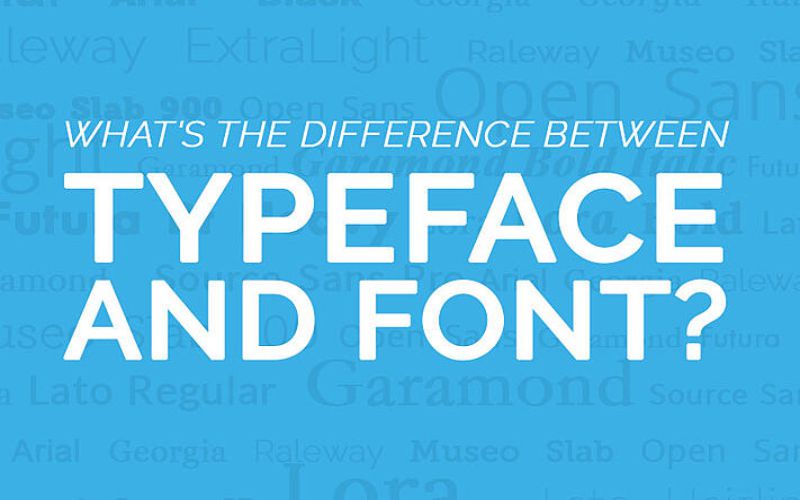
WidthsĬompressed, condensed, semi-condensed, narrow, normal, extended, extra extended, expanded. Weights for fonts can be thin, hairline, ultra-light, extra light, light, book, regular/roman, medium, semibold, bold, extra bold, ultra-bold, black and ultra black.
#DIFFERENCE BETWEEN TYPEFACE AND FONT CODE#
Let’s take a look at an example Helvetica is a typeface that consists of a common design code and a specific set of sans serif characters this whole typeface collection is, however, made from a whole collection of different fonts with specific weight, style, and size and with other different specifics.įonts have many different features that are unique to a font. The main difference between a font vs typeface is the fact that font exists as a part of a typeface. Typefaces are really the collective names for sets of related fonts, while fonts correlate to weights, styles, and widths. This is where the confusion comes from, as people think that fonts are digital, while typefaces are physical. This confusion has been made when digital fonts were introduced, and when these typefaces were named to fonts for naming conventions. Often when people say fonts they are thinking of typefaces in reality. Often they are used interchangeably, but that is incorrect. The difference between font vs typeface is there, but it is rather complex and often misunderstood nowadays. Nowadays, it might seem like there is no real difference between the two terms while it is true in some settings, but in some specific contexts the difference between the two is really essential and you should keep that in mind. The usage of these two terms has changed over the course of decades and centuries since the print was invented. Each font had different parameters and differed from other fonts. These blocks were put together in groups, and each group had a different setting and parameters. The characters were represented by metal blocks that had a relief of the character on its face (typeface), and then they were arranged in such a way that would represent the right letters and the correct sequences then ink was applied, and letters were stamped onto paper.Įach character or the block was unique. To explain more about this, the letters had to be physically laid out every time you wanted to print them.

Printing was invented centuries ago, and it was different from what it is today. Let’s tap into the history of fonts a little deeper and try to find meaning there. To outsiders, some of these words seem meaningless, but professionals are actually important. It often depends on the specific context of where the term is used.
#DIFFERENCE BETWEEN TYPEFACE AND FONT PROFESSIONAL#
In the professional field, terms often find different meanings than they would have otherwise, and they often become very specific to the field.įor this reason, you need to learn the right etymology when it comes to your field of profession.

If you are a professional, then you should really know the two terms and the difference between them. Please check your inbox for the newsletter confirmation email. If you are talking to a designer of a professional in this field, knowing the difference between font vs typeface is actually very important and can challenge your reputation and knowledge in this field. If you are talking to a client of yours who you are doing the job for, then it might even seem that they do not know what a font is. Often, it depends on the person you are talking to. To find out the real difference between a font and a typeface, we have to dig deep into the history of the two terms and how they developed from analog media developing into digital media and so much more and the history of print writing and more. It might seem like the difference of font vs typeface only really matters to font artists and editors. The difference between the two terms has become a little fogged in recent years as they have been interchanged quite a lot in different fields and to some people, it seems like there is no difference at all. What is the difference between font vs typeface and does it really matter? In this article, we will take a look at font vs typeface and what is the difference between the two. When we are comparing font vs typeface, we need to know that for some people the difference might be very minimal and unimportant, while to others it is very important and matters a lot. Those of you who are experts in this field have often seen this mistake happen and possibly corrected the beginner and told them that they are not the same things.

One of the major misconceptions that beginners have about fonts and typefaces is believing that the two are actually the same things.


 0 kommentar(er)
0 kommentar(er)
